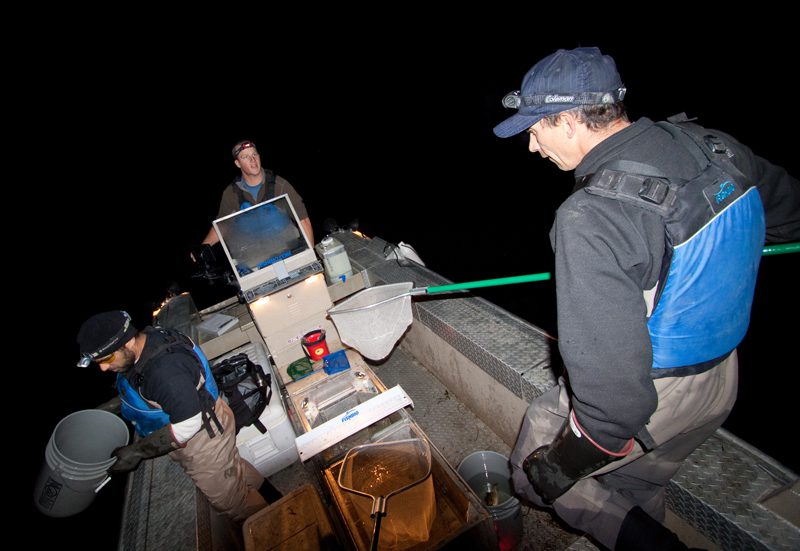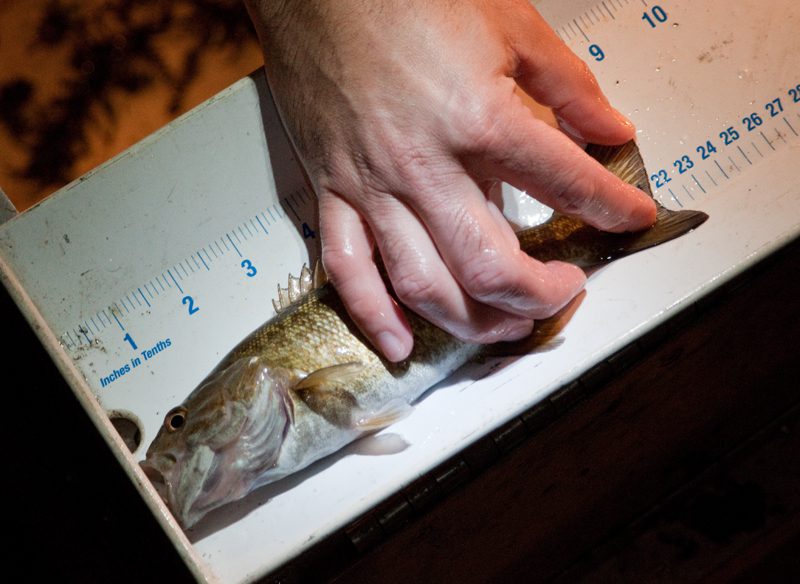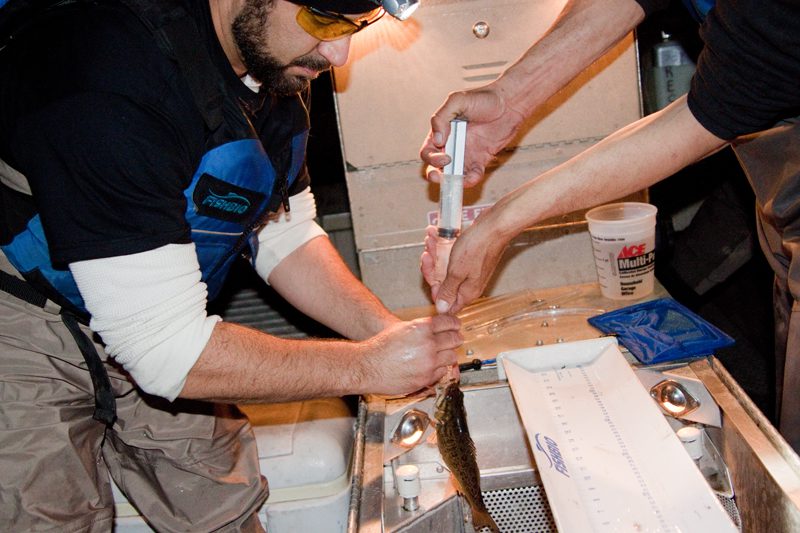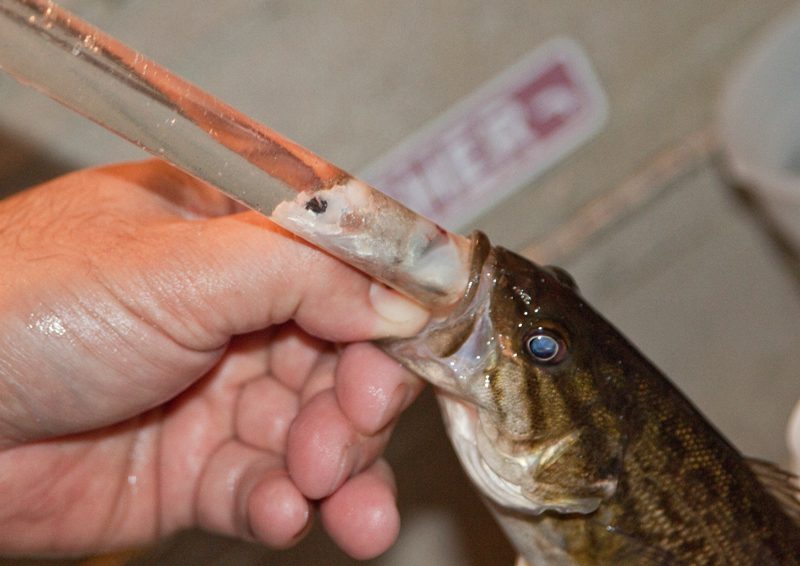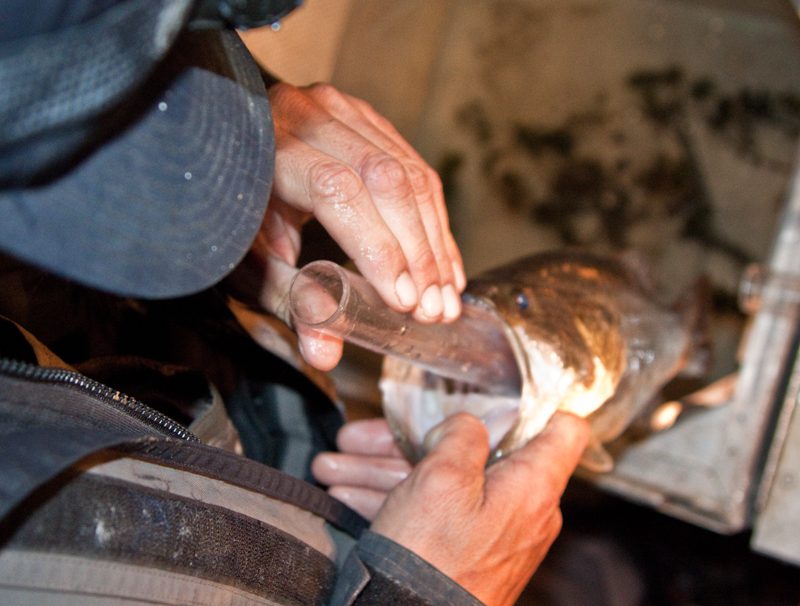Wednesday March 28, 2012
There are many ways to collect information on the diet of wild animals, including observing their consumption habits, looking through the contents of their stomachs, and even sifting through what comes out the other end. Fisheries researchers usually opt for analyzing stomach contents, which can be obtained by either sacrificing the fish and dissecting out the stomach or removing the stomach contents by non-lethal means, such as using tubes, suction, or water flushing (i.e., gastric lavage). Gastric lavage is usually the preferred method for obtaining the stomach contents of live fish since the fish are released a little hungry, but in relatively good shape. Stomach contents can be obtained by placing a polyethylene tube into the esophagus of a fish and flushing water into the stomach using a hypodermic needle (mechanized pressure). Mechanized pressure is one of the most effective methods, and has been shown to be up to 100% effective for black bass (Kamler and Pope 2001). The process of performing gastric lavage can be viewed on our YouTube page.
Our crews have been electrofishing nightly to catch predatory fish species and collect stomach contents. Juvenile Chinook outmigration is currently underway and it will be interesting to see how many turn up as a meal for the predatory fish species that inhabit the lower river.


